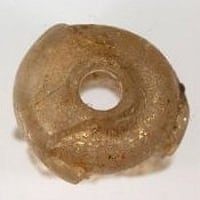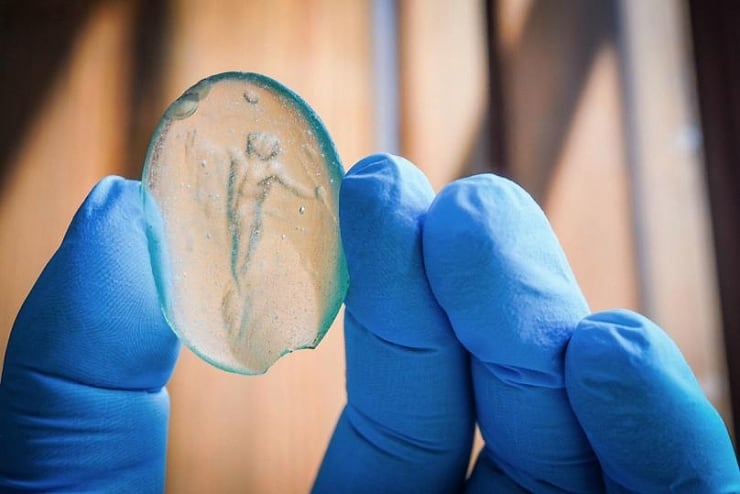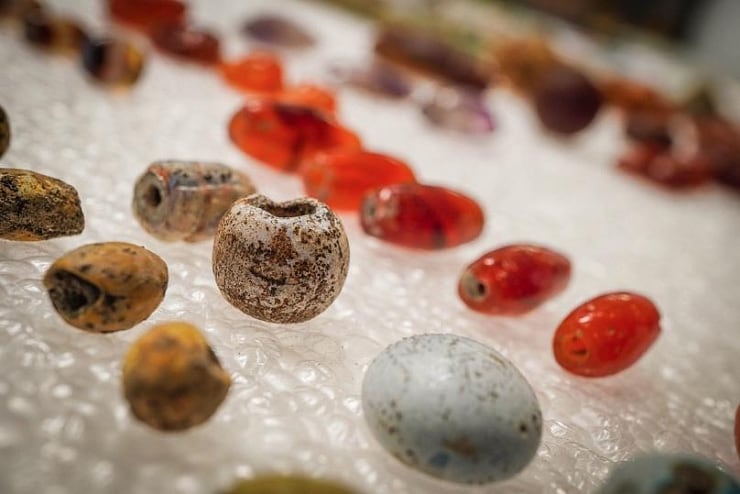18. 5. 2012 Roman glass beads with gold
Categories: Calendar , Nálezy v Asii a Oceánii
 Glass beads made by Roman craftsmen in the 1st and 4th centuries were found in Nagaoka, Japan, in 2012. They were found in an ancient tomb. According to experts, this clearly shows how much influence the Roman Empire had.
Glass beads made by Roman craftsmen in the 1st and 4th centuries were found in Nagaoka, Japan, in 2012. They were found in an ancient tomb. According to experts, this clearly shows how much influence the Roman Empire had.
Scientists have found out who made the beads through extensive research. It was carried out by the Nara National Research Institute. The beads are small, only five millimeters in diameter. They are made of glass and decorated with gold. The beads have a hole in the middle and were made using a relatively sophisticated method in which artisans stacked layers of glass and put gold leaf between them.
This is one of the oldest multi-layered glass products found in Japan. "These are very rare accessories that were made in the Roman Empire and sent to Japan. They were found in a burial site," said researcher Tomomi Tamura.
"The Roman Empire was centered around the Mediterranean Sea and stretched north to occupy England. The discovery in Japan may shed new light on how far east its influence reached. The discovery of the beads will lead to further studies that will hopefully shed light on how they may have reached Japan," Tamura said.
Beautiful jewellery from Pompeii
The beads are among the oldest jewellery ever made. For example, archaeologists found beautiful Roman women's ornaments in Pompeii two years ago. They found a whole collection of ornate jewellery, glass beads and lucky charms which they say give them an insight into the 'feminine world' of ancient Rome.
The collection was found in a wooden box in a garden house. In addition to the jewellery mentioned above, the archaeologists also found two mirrors, several necklaces, pieces of bronze, bone and amber and several phallic amulets.
"What is interesting is the iconography of the objects and amulets, which represent good luck or fertility. And numerous pendants in the shape of a small phallus or ear, a closed fist, skulls, the figure of Harpocrates and scarabs," outlined Massimo Osanna, director of the archaeological complex in Pompeii.
"The archaeological team also discovered a room in the house with ten victims of the eruption, including women and children. Using DNA analysis, we are trying to determine whether they are family," Osanna added at the time.


Sources: www.dailymail.co.uk, http://muzeum3000.nm.cz/, www.euronews.com, www.abroadintheyard.com
The article is included in categories: